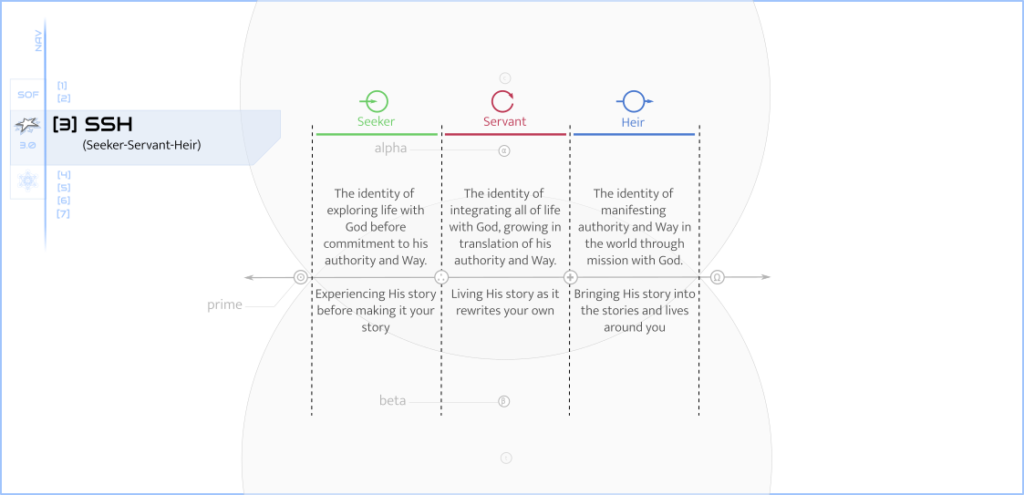
[3] Seeker-Servant-Heir
Seeker-Servant-Heir (SSH) illustrates shifts in identity through a person’s spiritual journey using [3] The Trifold form of [3] The Trinity, the third systems shape of the Semantic Ontology Framework (SOF). The first identity — Seeker — is the person who is exploring faith in God or Jesus, what life with him would look like, and is generally previous to an immersive commitment into identifying as a Christian or Jesus-follower. The Servant identity is the person committed and growing in what it means to know God through service to him through service to others. The Heir identity is the person who has fully merged their identity with Jesus and joined him in mission in all areas of life.1
SSH represents a high-level view useful for understanding one’s own developmental journey or for the process of Disciple-Making. It is also allegorically powerful on an Iterative level: every new level of growth cycles metaphorically through these identities within that particular area of growth or system.
| Seeker | Servant | Heir | |
|---|---|---|---|
| Call | “Come and see me” | “Come and follow me” | “Come and be with me” |
| Response | Curiosity | Grateful Service | Participation |
| Growing in Jesus | Lordship | Likeness | Life-on-Life |
| Focus | self, “what is God saying to me?” | group, “what can we do for God?” | God, “God, who am I in you?” |
| Learning Level | Knowing | Doing | Becoming |
| Community Connection | Belong | Becoming | Believing (all things) |
Media

Meta
This framework was originally Seeker-Servant-Son in older versions before it was updated with more inclusive terminology. Much of the text related to these different identities was taken from Revolutionary, Book 1, a discipleship series that follows the life of Christ in twelve steps.
Related Entries
References & Notes
- John Wesley identified two motivations for following Christ that are enabled by grace: “faith of a servant” and “faith of a child of God”. See: Hal Knight. “Motivation Behind Discipleship” Missouri Conference of the United Methodist Church. https://www.moumethodist.org/newsdetail/motivation-behind-discipleship-7644029 (Accessed 3/7/22).

